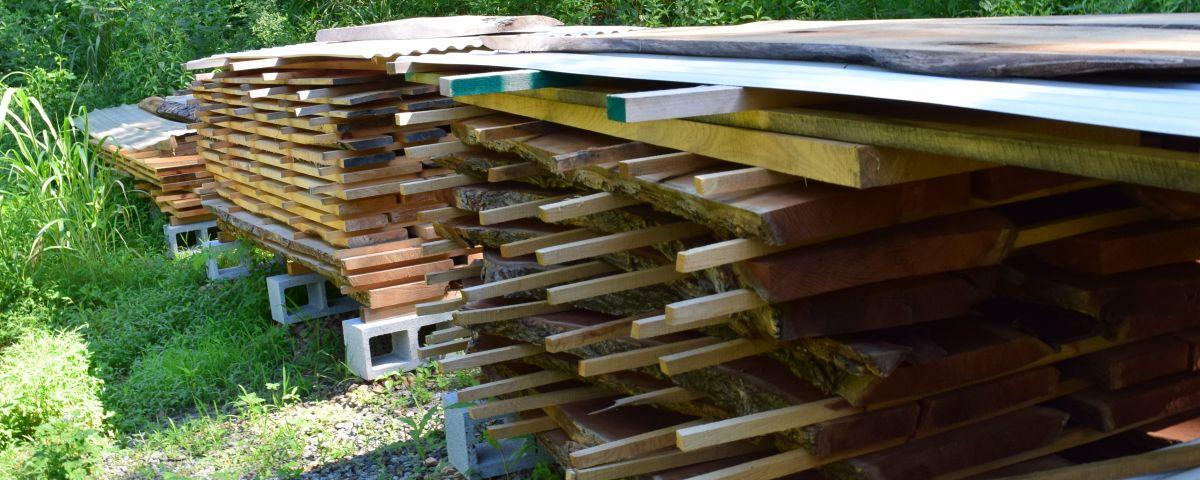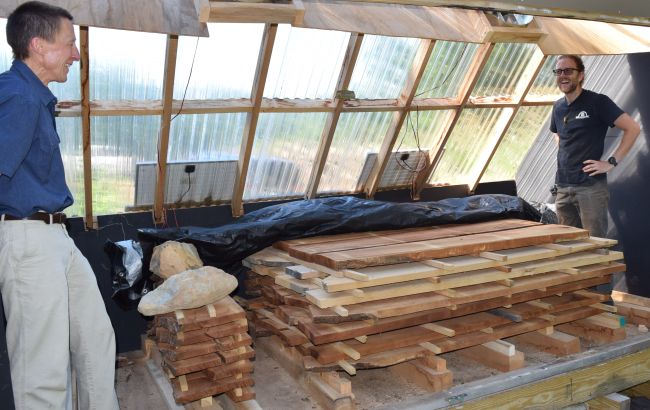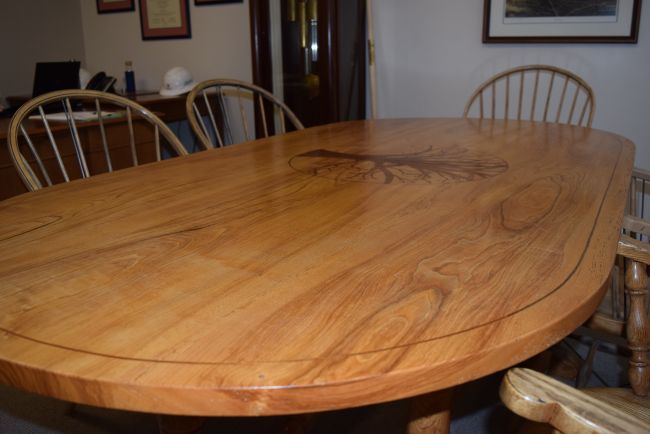
UVA Sawmilling works with Facilities Management and other UVA entities to repurpose the larger and unique trees that must be taken down into lumber, furniture and wood for student projects.
In 2019, Andrew Spears (’20) and other students in the School of Architecture noticed there were a lot of trees coming down around Grounds. “We got to talking and wondered what was happening to them. That was the question,” he says.
The answer was that virtually all the trees were being ground into mulch, save for an occasional specimen that was a significantly outstanding and beloved tree. Wood from the McGuffey Ash, for example, the 160-year old tree behind Pavilion IX that was taken down in 1990, was turned into a table and picture frames.
Sometimes felled trees went to the A-school for students to use for various projects, says Mark Kutney, an architectural conservator with Facilities Management who co-teaches a field methods course in architectural history. “You hate to see a great big oak be ground up when you know it makes beautiful lumber.”
The idea to develop a more consistent system for utilizing UVA’s storied trees for a higher purpose took shape, and UVA Sawmilling was formed with the help of the A-School, Facilities Management and the Office for Sustainability.
UVA’s trees are extremely well-taken care of, Kutney notes, so there are many exceptional specimens around Grounds, but storm damage, old age or construction means sometimes they have to be taken down. Spears says there’s good two-way communication now between his team and the arborists at Facilities Management to identify trees better suited to be milled rather than mulched. With a grant from the Student Council’s Sustainability Committee, the team built a solar kiln on Observatory Hill in 2020, and they have funding from the Virginia Department of Forestry for a second kiln. They contract with sawyers around the region to do the milling on or off site.
Another example of what Kutney calls “legacy” material is the 125-year-old poplar on the north side of Alderman Library that had to be removed three years ago. It was milled and made into two tables for an outdoor classroom at Campbell Hall. An old maple tree recently had to be removed for the Emmett/Ivy Corridor construction; it was milled, dried and is in UVA’s cabinet shop to be turned into shelving for Carruthers Hall.
“The older ashes on the Lawn will likely have to come down at some point,” Kutney says, due to ongoing damage from the emerald ash borer.
Spears says these kinds of projects are generally more sustainable, with the carbon being held in the wood and most, if not all of the work being done locally.
He occasionally fields queries from community members, too. People involved with the redevelopment of Friendship Court had to take down three big oaks and wanted to know how they could repurpose the wood “to live on in our community.” He was able to give them some ideas and connect them with local sawyers.
But they can’t take on too many projects. UVA Sawmilling is just getting off the ground and the stakeholders are trying to figure out how to make it a sustainable operation, Kutney says.
Hence the sale of the poplar slabs. They haven’t sold any of their milled wood yet and are curious to see if there’s enough demand and revenue to help keep the program running. They have other motives, as well.
“We want to continue to make use of old trees,” Spears says. “To preserve them, tell their story, allow students to kind of see their time here at the University or the time throughout the life of the University written in the trees and the tables, desks, benches, whatever it may be.”
-- By Cat McCue, Communications Generalist, Office for Sustainability


